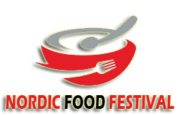Prepping For Mini Party Set Catering Events

Take note of food temperatures
When preparing mini party set catering, storing and keeping food on warmers or ice, see to it you prevent the threat zone (4 to 60 ° C) so that nobody is at threat for foodborne health problem as microorganisms multiply at a worrying rate when stored at these temperatures for an extended time period.
- Cook all foods to the suitable temperature (75 ° C or above or below that temperature if food is held at a temperature for a proper period of time).
- Cool down foods to the proper temperature level (5 ° C)
- Store foods effectively in airtight containers that are plainly classified and dated.
- Hot holding foods should be above 63 ° C, or if not, consumed within a number of hours.
- Reheated food ought to be elevated to a temperature of 82 ° C. A time and temperature mix will make certain food has been safely reheated.
Streamline the menu
Numerous catering organizations supply excessive choices. A messy, unfocused food selection not only overwhelms your visitors; it overwhelms you. You’ll struggle to arrange ingredients and cooking for 50+ dishes, which results in lost money and time.
Fewer options suggest people spend much less time choosing and you save time food preparation, as you’ll likely wind up preparing several of the same recipes. Streamlined prep work is especially vital throughout peak times. If you’re stalled trying to manage a dozen various requests, diners turn over slower and you lose sales.
You should also prepare several dishes that share ingredients, not just to give individuals choice but to maximize your inventory.
Keep summaries straightforward so the menu is simple to read. Most individuals would like to know precisely what’s in the meal, not which country the taste metaphorically sends them to.
Take note of your energy levels
If you can find the time, it’s suggested that you exercise and consume healthily to stay in shape. Food catering is demanding literally since you’ll often be on your feet for hours, walking between the kitchen areas and the event space. You’ll need great deals of energy for that – whether you’re a supervisor, server, or cook.
The plus side is you commonly cannot serve food trays – when serving starters at, say, the coat check (where you’ll commonly have great deals of down time and reach sit down) – when they are almost empty, so when walking back to the kitchen area you may be able to consume the last small quiche or salmon roll (ask your manager initially, though), which can offer some energy.
Distribute roles accordingly
The catering market has front-facing serving personnel and cooks who both operate at the back of the environments to bring everything collectively to accomplish the final product. Catering servers are the ones who interact with the guests at the occasion, but additionally may aid put up the occasion.




